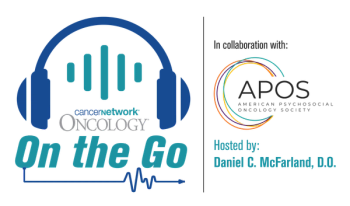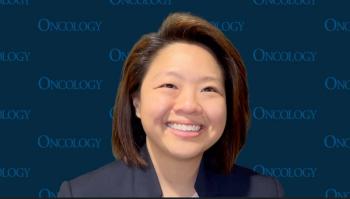
- ONCOLOGY Vol 11 No 1
- Volume 11
- Issue 1
Persistence of Lymphedema Reduction After Noninvasive Complex Lymphedema Therapy
Secondary lymphedema is quite prevalent in cancer patients who require lymph node dissection for staging and/or treatment of their disease. Chronic lymphedema may arise shortly after surgical intervention or months to years afterward. The tendency of chronic lymphedema is to worsen over time.
Secondary lymphedema is quite prevalent in cancer patients who requirelymph node dissection for staging and/or treatment of their disease. Chroniclymphedema may arise shortly after surgical intervention or months to yearsafterward. The tendency of chronic lymphedema is to worsen over time.
Even with mild limb swelling, the patient is at increased risk of localinfection, pain provoked by stretching of soft tissues, and psychologicalstress due to changes in body image.[1] More severe lymphedema may interferewith activities of daily living because of increased weight and decreasedrange of motion of the limb, as well as skin changes. In addition to hyperkeratosisand verrucous skin changes, a rare, aggressive, secondary malignancy, lymphangiosarcoma,may arise.[2] Because of all of the above, the treatment of secondary lymphedemashould not be neglected.
Two Major Nonoperative Treatment Approaches
Two major approaches to the nonoperative treatment of lymphedema areused in the United States. A combination of physical therapies (CPT) employsmanual lymphedema treatment, therapeutic exercise, and wrapping or bandagingof the limb.[3] Manual lymphedema treatment is a form of massage that enhanceslymphatic function in the involved limb and collateral lymphatic channelsthat communicate with areas of relatively normal lymphatic drainage.[4]Following a series of treatments, edema reduction is maintained by theuse of gradient pressure garments and/or bandaging, therapeutic exercise,and additional massage treatments as needed.
Intermittent pneumatic compression is the other major approach; thisusually entails the application of distal to proximal compression to theaffected limb.[5] After such treatment, a gradient pressure garment isworn to maintain the reduction achieved.[3] Some practitioners employ methodsfrom both general approaches. Controversy exists over the optimal methodof conservative treatment.
As mentioned in the article by Boris et al, prior papers have describedsuccessful outcomes using manual lymphedema treatment as the basis forCPT in treating the lymphedematous limb. The results reported by Boriset al are noteworthy for two reasons. First, the average reductions inlymphedema reported are comparable to previous reports of favorable outcomes.More important, measurements taken 3 years after treatment indicate maintenanceof at least part of the initial lymphedema reduction without additionalmanual treatment. Furthermore, patients reported as being 100% compliantwith the maintenance program had further edema reduction.
Some questions regarding the article by Boris et al come to mind. Wereall patients 100% compliant for the entire 30-day daily treatment regimen?If so, what approaches or incentives were utilized to get so many consecutivepatients to be so compliant? The precise meaning of the categories of percentagecompliance at the time of 3-year follow-up is not defined. Given the reportedbenefits of adherence to a maintenance program, methods to increase patientcompliance need to be addressed.
In addition, more than 25% of patients undergoing 30 days of treatmentwere not included in the 3-year follow-up. Inclusion of all surviving patientsmay have affected the follow-up results. It is not entirely clear whetherthe initial reductions reported were different in primary vs secondarylymphedema patients. Nonetheless, the reported average reductions in lymphedema,both initially and after 3-year follow-up, are encouraging.
Need for Comparative Studies
The combination of physical therapies used for the treatment of secondarylymphedema is labor-intensive. It requires an appropriately trained therapistwho can deliver daily treatments for a 30-day period. Furthermore, it requirespatient compliance over the treatment period. This raises the issue ofeconomic considerations. Such intensive treatment can be costly and mayinterfere with the patient's work schedule. Some patients definitely cannotcomply with intensive CPT because of one or more of these reasons.
It is certainly conceivable that fewer than daily treatments or treatmentslasting less than 30 days may have similar efficacy. Therefore, comparativestudies are needed to define the optimal frequency and duration of CPTor the characteristics of a subpopulation who require less intensive treatment.
Many practitioners utilize intermittent pneumatic pumping as the firsttreatment for moderate or severe chronic lymphedema.[5] Various aspectsof pneumatic pumping are controversial, including the optimal pressureand duration and frequency of therapy. For patients who cannot comply withintensive CPT , pneumatic pumping, perhaps in combination with some aspectsof CPT, may be helpful. Again, comparative studies would be useful to definewhich patients, if any, would benefit from pneumatic pumping, even as partof CPT.
Conclusions
Although the reported results of Boris et al are impressive, economicand other constraints may prevent a sizable number of patients with lymphedemafrom undergoing such labor-intensive treatments. Currently, many health-careinsurance carriers limit reimbursement for CPT treatments. Hopefully, furtherstudies will seek to discover similar or different approaches that maybe more readily available to a greater number of patients with lymphedema.On the other hand, these studies may help document that daily CPT treatments,including manual lymphedema treatment, over a 30-day period, are optimalfor the treatment of secondary lymphedema. Such documentation should encourageinsurance carriers to cover the necessary treatments.[3] This, in turn,would encourage greater availability of CPT to the average patient.
References:
1. Passik S, Newman M, Brennan M, et al: Psychiatric consultation forwomen undergoing rehabilitation for upper- extremity lymphedema followingbreast cancer treatment. J Pain Symptom Manage 8(4):226-233, 1993.
2. Stewart FW, Treves N: Lymphangiosarcoma in postmastectomy lymphedema:A report of 6 cases in elephantiasis chirurgica. Cancer 1:64-81, 1948.
3. International Society of Lymphology Executive Committee: The diagnosisand treatment of peripheral lymphedema. Lymphology 28:113-117, 1995.
4. Leduc A, Caplan I, Leduc O: Lymphatic drainage of the upper limb:Substitution lymphatic pathways. Eur J Lymphology 4:11-18, 1993.
5. Pappas CJ, O'Donnell TF: Long-term results of compression treatmentfor lymphedema. J Vasc Surg 16(4):555-562, 1992.
Articles in this issue
almost 29 years ago
Laser-Drug Combination May Treat Breast Cancer Without Surgeryalmost 29 years ago
Prostate Cancer: To Screen or Not to Screen?almost 29 years ago
Fusion of Images Improves Cancer Diagnosis and TreatmentNewsletter
Stay up to date on recent advances in the multidisciplinary approach to cancer.


















































































